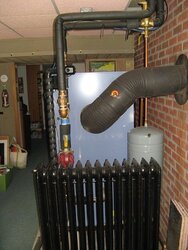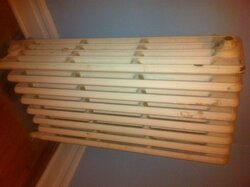I found some steam radiators that are being used but will be taken out.
They at
20 wide x 38 tall They have 8- 5 tube sections.
I can get them for $20 each.
Other than pressure difference is there other issues with steam radiators?
More corrosion or less?
They have top and bottom ports on both ends.
gg
They at
20 wide x 38 tall They have 8- 5 tube sections.
I can get them for $20 each.
Other than pressure difference is there other issues with steam radiators?
More corrosion or less?
They have top and bottom ports on both ends.
gg



